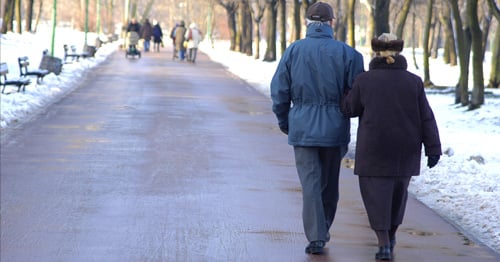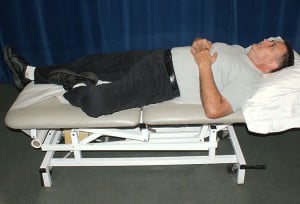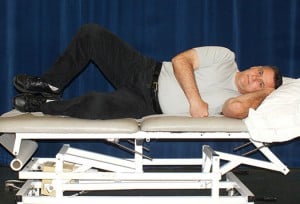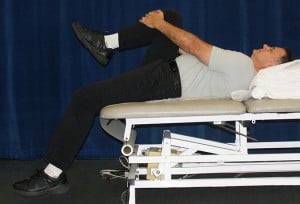Alleviating the Limp after a Total Hip Replacement
Many people who have undergone a total hip replacement have had a significantly altered gait pattern, or limp, for some time prior to surgery. Besides reducing pain, alleviating a limp is the priority for many during the recovery period. Improving your ability and efficiency of walking is a multifaceted process. Once the arthritic joint is replaced, the muscles and tissues surrounding the joint must regain the elements necessary to allow optimal movement.

The hip joint is complex, in that it moves in several directions and requires profound strength in order to propel us out of chairs, up stairs and forward while walking. Following a hip replacement, most people will lack strength, while others will lack the proper flexibility and motion around the hip to achieve a smooth stride.
The hip joint requires a balance between flexibility and strength, which can be a challenge to achieve. It is necessary to include both strengthening exercises and flexibility exercises into your post-operative recovery. Your rehabilitation team should provide you with exercises to perform in order to regain motion and strength, tailored to your individual needs. Below are some basic examples of the kind of exercises that you might receive. It’s important to note that every case is unique, and following the guidelines provided by your surgeon and physical therapist is essential for a successful outcome following your surgery. Some of these exercises may not be appropriate for certain individuals, based on surgical technique and recommendation. (Find a hip replacement surgeon at HSS to suit your specific condition, location and insurance.)
The figure 4 stretch

Lying on your back with your unaffected leg straightened, bend your affected knee. Allow the affected knee to fall out to the side, without letting your pelvis rotate. You may feel the stretch in the front, back or side of the hip. This stretch should not be painful. Hold for 10 to15 seconds, then return to the starting position. Repeat five times.
The clamshell

Lying on your unaffected side with both knees bent to 90 degrees and your hips bent to approximately 15 degrees, lift only the top knee, keeping your feet together. Avoid pelvic rotation. Lift the knee as high as possible without rotating your pelvis and hips backwards. Repeat 8 to 12 times. Do two to three sets, resting 20 seconds between sets.
The jack-knife stretch

Lying on your back on the edge of your bed or a table, pull the knee of your unaffected leg towards your chest. Let your affected leg dangle off the edge of the bed or table in a relaxed position. You should feel the stretch in front of the thigh and hip. Hold for 10 to 15 seconds, then return to the starting position. Repeat 10 times.
